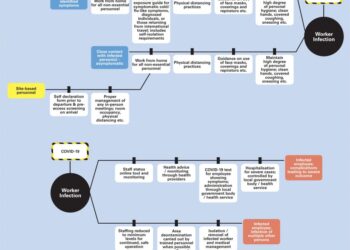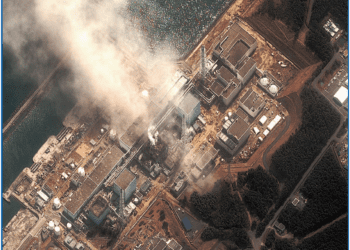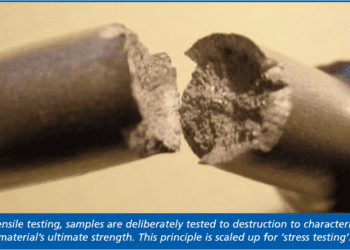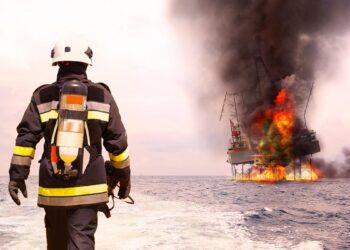Crisis management: the impact of Hurricane Harvey on petrochemical facilities
Hurricane Harvey, a Category 4 storm, hit Texas in August 2017. It caused an estimated $180 billion in damage, more than any other natural disaster in US history. But hurricanes are nothing new to the Houston area, home to one of the world’s largest manufacturing centres for petrochemicals. So how well prepared were these facilities?
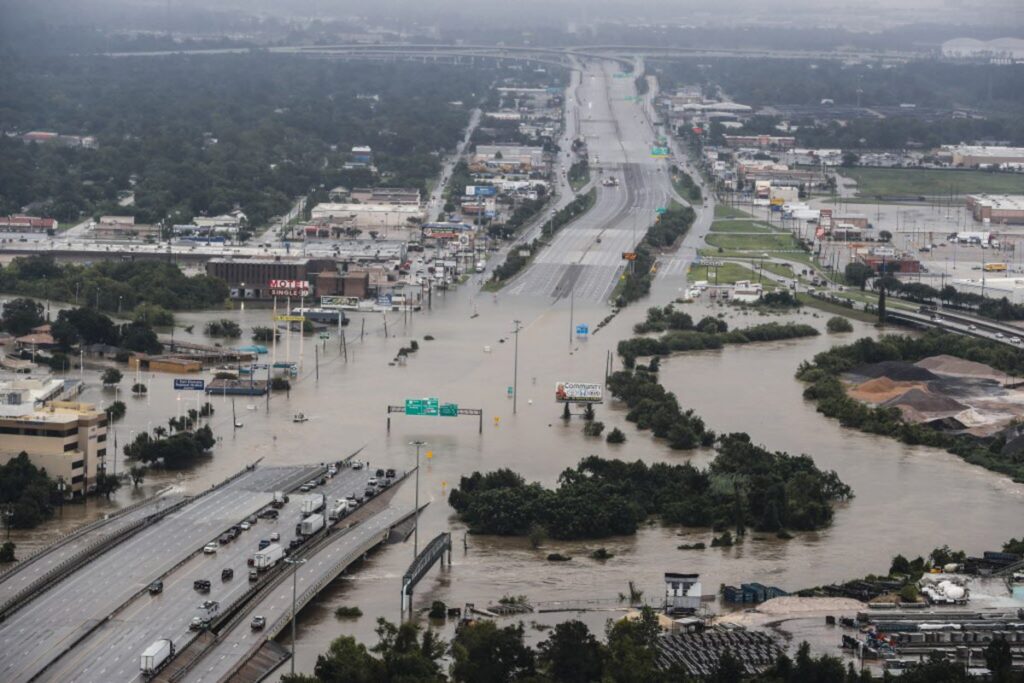
Brett Coomer/© Houston Chronicle
Hurricane Harvey made landfall on the Texas Gulf Coast on 25th August, with winds topping 130 mph. In a four day period, many areas of Houston received more than 50 inches of rain as Harvey meandered over eastern Texas, causing catastrophic flooding. With peak accumulations of over 5 feet of water, Harvey is the wettest tropical cyclone on record in the US.
The floods inundated hundreds of thousands of homes, displaced more than 30,000 people and prompted more than 17,000 rescues. There were at least 82 deaths.
With weather forecasters issuing dire warnings, the majority of petrochemical facilities initiated crisis management plans. The indications are that these plans generally worked very well, though clearly lessons need to be learned from some events – for example, the Arkema chemical plant explosion and fire, where site flooding and loss of all power to the refrigeration unit was arguably a foreseeable scenario.
CRISIS PLANNING
Crises are unpredictable. However, that doesn’t mean a response cannot be planned. Crisis management requires a forward-looking, systematic approach that creates organisational structure and processes, as well as trained people and supporting equipment. It is evaluated and developed in a continuous, purposeful and rigorous way.
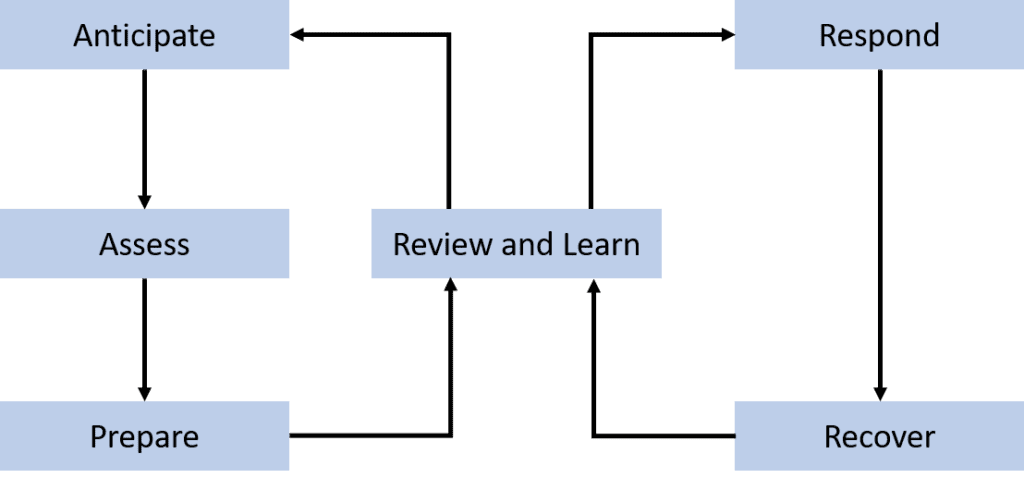
A typical framework for crisis management is shown in Figure 1 (adapted from Ref. 1). The elements are:
- Anticipate – Identify potential crises and other disruptions.
- Assess – Analyse evidence and make judgements about potential impact and actions required.
- Prepare – Ensure the readiness of the organisation to face specific risks and handle crises that are not foreseen.
- Respond – Act quickly in an informed manner and with the desired effect.
- Recover – Sustain crisis response into a longer term, strategically directed effort to recover reputation and value.
HARVEY’S AFTERMATH
Houston has more than 400 chemical manufacturing establishments employing over 35,000 people. Houston also has two of the four largest US refineries, including ExxonMobil’s complex in Baytown.
The New York Times reported that more than 40 sites, including petrochemical plants, refineries and toxic waste sites, released hazardous pollutants because of Harvey. The Houston Chronicle reported that Harvey toppled storage tanks and spilled nearly 2,000 barrels of oil and waste water over several locations. Most of the releases of hazardous pollutants occurred during the process of shutting down facilities prior to the storm hitting and then restarting them once the worst was over. For instance, during shutdown there is inevitably a great deal of flaring.
ExxonMobil acknowledged that two of its refineries were damaged, causing the release of hazardous pollutants. High emissions of volatile organic compounds were caused when a floating roof covering a tank at the Baytown oil refinery sank in the heavy rains. At the company’s Beaumont petrochemical refinery, a sulphur thermal oxidizer was damaged. As a result, the plant released over 1,300 lbs of sulphur dioxide, well in excess of permissible levels. Other toxic chemicals such as benzene were also released in excess of permits.
In another example, Chevron Phillips said that it expected its Cedar Bayou chemical plant to have exceeded allowable limits during shutdown procedures for several hazardous pollutants, such as 1,3-butadiene, benzene and ethylene.
RIGHT RESPONSE
Getting the essentials right to protect people and plant is not a trivial undertaking. Most facilities initiated their crises management plan many days in advance by:
- Stopping all non-essential work.
- Rotating staff so that those in the local area had time to prepare their homes and families for the hurricane.
- Staging critical equipment needed for recovery.
- Working with partner mutual aid organisations from industry to preplan.
- Shutting down or reducing throughput.
- Releasing all non-essential personnel.
- Providing safe shelter, food and water for those that remained on site during the hurricane.
Many companies have critical emergency response teams which are populated by employees from outside the affected area. They were brought in ahead of time to help stage recovery equipment, or brought in afterwards to help clean up debris, check fitness for service of equipment and assist with key start-up phases.
RECOVERY POSITION
For the vast majority of owners, the health and wellbeing of their employees is the highest priority once the event is over.
The riskiest time of any high hazard facility is during shutdown and startup, especially following such an extreme event where latent damage is a possibility. It requires the full attention of all employees, which may be challenging if they are preoccupied with the status of their family or home. So it is in everyone’s interest to ensure that employees and their families are safe and secure before beginning the recovery process.
The bulk of the Gulf Coast’s vast energy network made a comeback within three weeks of Hurricane Harvey. By late September, fifteen of the twenty refineries that went down or slowed production had almost fully recovered, though about 1 million barrels a day of refining capacity was still offline. So whilst Harvey’s epic impact has been largely temporary, it is sobering to note that had it made a direct strike at full hurricane force, the impact would have been more lasting and disruptive.
CONCLUSION
The severity of Hurricane Harvey has been characterised as a 1 in 500 year flood. This simply means there is a 0.2% chance of having a flood of that magnitude in any one year. The crisis management plans of hazardous facilities in the Houston area appear to have been effective in limiting damage from such an event, with perhaps some exceptions. In time, the lessons learned will unfold and suggest improvements to current plans.
References:
1. UK PAS200 Crisis management – Guidance and good practice
This article first appeared in RISKworld issue 32

